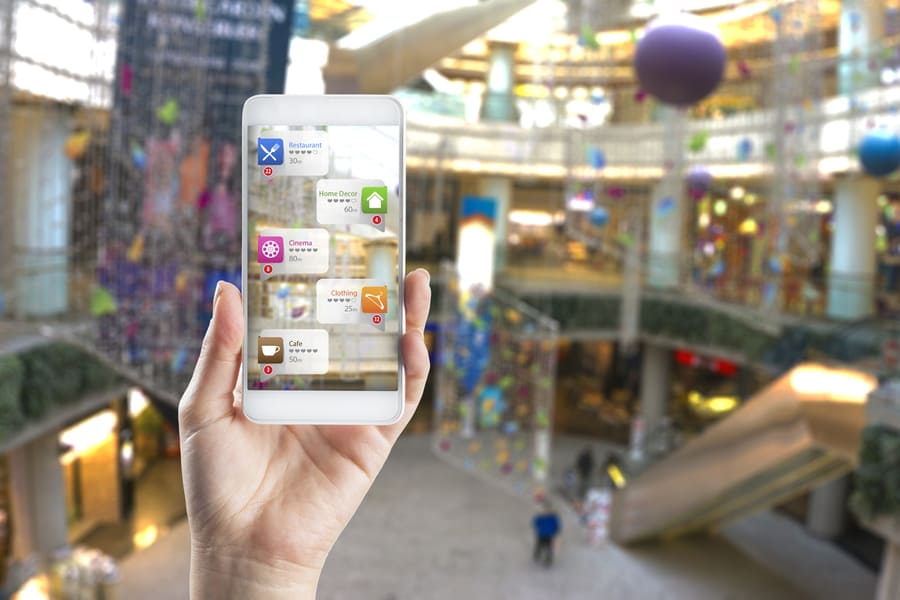While much of our lives have, indeed, become more digital in nature, the fact is, we still live in the real world. Innovative companies have been finding exciting new ways to blend reality with tech to create exciting new phygital experiences. This blending of physical and digital technologies is delighting customers and driving greater interaction with brands and their products.
With the rise of portable technologies like tablets, smartphones, wearable tech, and VR, consumer access to digital products is growing at an incredible pace. Today, nearly 62% of the world population has access to the internet, accounting for almost 4.25 billion active users. Unsurprisingly, digital presence is now one of the key factors influencing business success.
What is phygital technology?
Phygital refers to the blending of physical and digital elements of user experience. They offer new opportunities for brand engagement by putting customer experience (CX) at the forefront. In fact, 73% of consumers point to customer experience as a deciding factor in purchasing decisions.
This physical-digital combination bridges the gap between online and in-person experiences across a wide range of environments and contexts. While this may differ by product, it usually starts with understanding how customers behave in both physical and digital spaces.
Phygital ecosystems employ a combination of:
- physical elements and digital devices
- platforms
- enhanced reality
- digital tools
Phygital experiences serve as more than just streamlined buying and selling channels. Instead, they aim to integrate functional transactions like commercial activities with more human needs, like emotional or social engagement. By creating more holistic and personalized user experiences, phygital technologies are improving how companies and their customers interact.
You can think of true phygital experiences as those where customer activities online and offline are seamless. For example, Amazon’s new AmazonGo stores allow customers to sync in-person payments at brick-and-mortar stores with customer online accounts. By blending real-world experiences and actions with digital platforms, they are creating new ways for customers to engage with their brand and products.
How is phygital tech changing business?
In retail, omnichannel strategies have been the standard for companies aiming to maximize value creation in the last decade. Phygital technology is now advancing the field by offering greater personalization in CX design. As a result, marketing professionals have gradually been shifting away from omnichannel strategies, moving towards phygital solutions.
One reason for omnichannel technologies’ declining popularity is their focus on the operational capabilities of technology. Marketers know that at the end of the day, customers are human beings. This means that any strategy to improve customers’ buying experiences also needs to be human-centered.
Customers’ needs matter, but what do they need? 80% of U.S. consumers expect their commercial services to be fast, convenient, and supported by human interaction. This holds true across generations and industries. More than 60% of B2B buyers confirm that one of the deciding factors when it comes to contracting services is how good their customer experience was.
It’s important to remember that phygital tech is a wide-spanning concept. It includes different industries and sectors like:
- Education
- Banking
- Travel
- Health care
- Hospitality
- Entertainment
Regardless of industry, the primary goal is to create holistic customer journeys that resonate with consumers on a personal level.
Tips for setting up phygital solutions in your business
Many businesses aiming for phygital success tend to hit stumbling points by forgetting that the phygital experience is a hybrid concept. This means that simply attempting to replicate physical experiences digitally will fall short. To ensure successful phygital implementations, companies need to focus on consumer-centric strategies.
The aim should be to combine the experiences from the physical and digital domains to create experiences that consumers can appreciate. This means understanding customer pains and working to fulfill their expectations.
The following are 4 tips for successful phygital implementations.
1. Focus on the Customer Experience
The old business mantra, “the customer is king” is especially relevant when it comes to creating incredible customer experiences. Your entire strategy should start and end with the customer’s needs. Your implementation strategy should leverage physical and digital elements of customer interaction with your business services and products. Focusing on creating personalized experiences should guide how you work to create seamless phygital experiences.
2. Use data to better understand your audience
Data-driven decision-making is the open secret to business success. Phygital tech uses customer data to create unique buyer profiles. Using this information, you can improve the customer experience by:
- streamlining purchasing
- improving customer support
- supplying product information
- providing reviews
- offering personalized after-sales support
The goal is to use data in a way that makes consumers feel seen and heard, not just monitored.
While it’s easy to collect customer information digitally, at physical stores, it can be more difficult. Some solutions include in-store check-ins and RFID-tagged products, or apps that integrate barcode or QR code scanners. These can bridge the gap between customer digital accounts and in-store product interactions, creating more holistic shopping experiences and providing more nuanced data about customer habits.
3. Understand how customers are using technology
Tracking how customers interact with your brand’s services or products is extremely important. To continue delivering value that delights and excites them you need to know how they prefer to interact and be interacted with. The data points you track should answer 3 key questions:
- What kind of devices are customers using?
- How often do they use them to interact with your brand?
- What kind of interactions do they have with your brand?
This information can be used to optimize digital offerings, as well as create support for in-store activity digitally. For example, in the U.S. 52% of consumers use their smartphones in brick-and-mortar stores to access discounts and special promotions. Aligning promotions with phygital events at storefronts can create memorable customer experiences, which helps drive interaction, brand loyalty, and brand awareness.
4. Create experiences to delight customers’ senses
The customer experience isn’t limited to just who they talk to or what they pick up (either physically or digitally). The things you can see, smell, touch, hear, or taste are all valuable aspects of the physical shopping experience. These are impossible to replicate digitally, so when blending digital product offerings with experiential shopping storefronts, it’s important to create a journey that appeals to customers’ senses.
SK-IIs Future X Smart Store pop-up concept has taken this idea to the next level. They have blended cutting-edge technologies, including AI-powered smart mirrors and voice-activated robotic skincare specialists to create a fully personalized experience for each of their customers. Meanwhile, Sephora has famously created augmented reality options for users to try out cosmetics digitally.
Better business value starts with creating customer experiences
As consumer technology evolves and everyday human behaviors change along with it, business needs to keep pace. It’s important to keep sight of the fact that while our lives are becoming more digital, customers remain human. They have emotional and psychological needs grounded in the real world.
At its heart, phygital business and marketing experiences are just an evolution of good customer care practices. Delivering experiences that seamlessly blend customers' physical experiences and digital lives will be key to creating better engagement and business value in the coming years. Emerging technologies present new opportunities to create lasting business value and optimize operations. Learn about some of the other tech solutions driving business value here.
About the author
Juan Pablo González
Working as Foreworth’s Chief Technical Officer, Juan Pablo (JP) manages the company’s technical strategy. With nearly 20 years of experience in software development, he ensures the development process at Foreworth is meeting its keys objectives and technical requirements.
More info →


What do you think? Leave us your comments here!